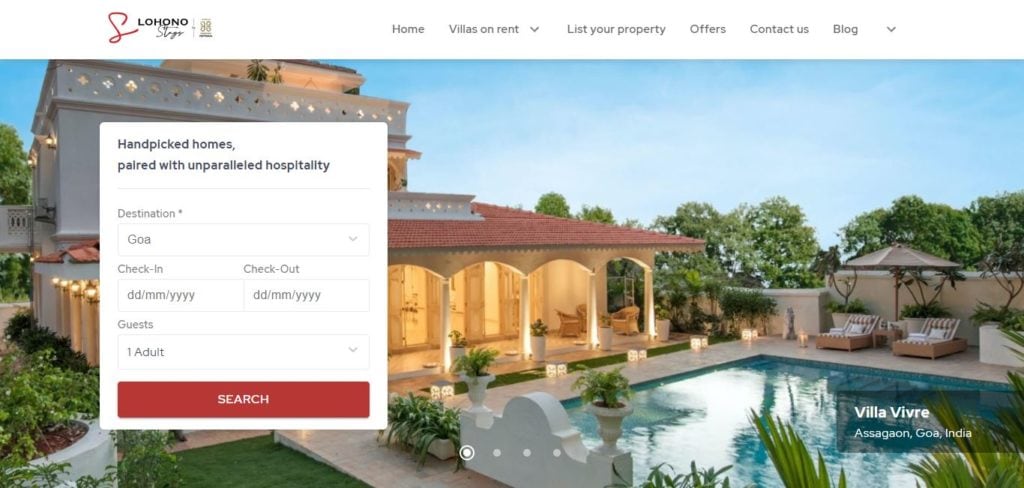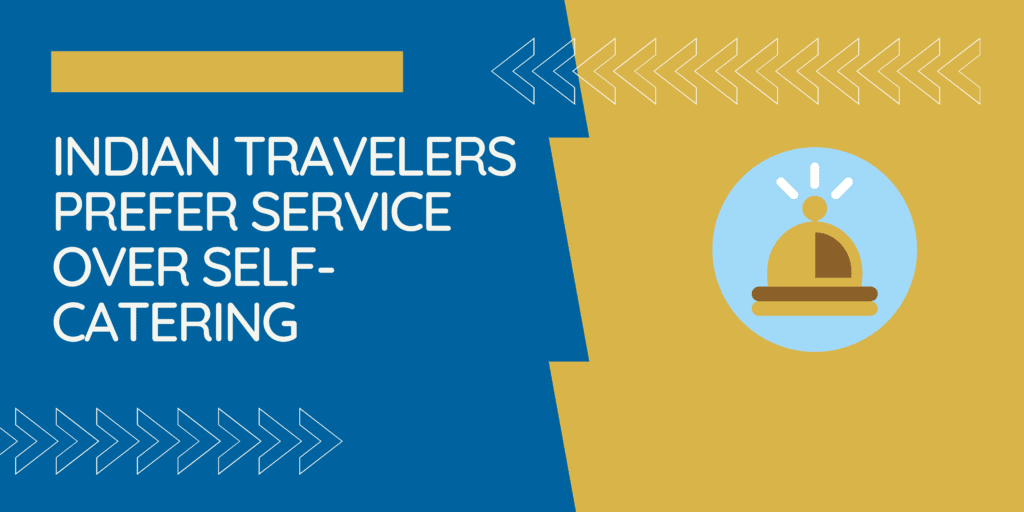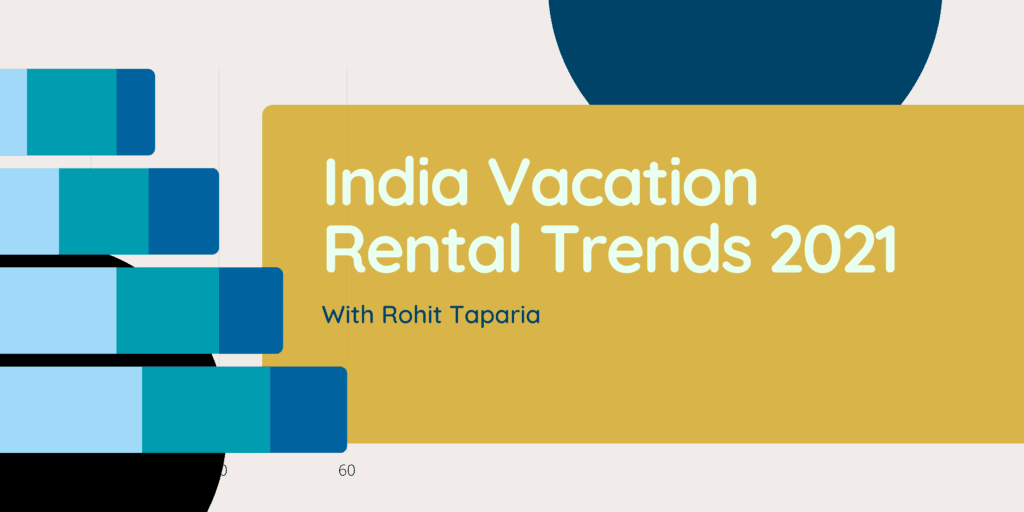With a population of 1.366 billion (2019), India represents a sizeable chunk of the world’s population, including, presumably, travelers. Yet somehow, it always gets left out of conversations about industry trends. We recently investigated the state of the Asia-Pacific market to highlight how the region’s been affected by the pandemic. Last year, we held a conference on the topic and also interviewed Jack Eden of Eden Villas in Sri Lanka as part of it.
To get the insider’s view into the Indian vacation rental market and get more recent trends, we had a chat with Rohit Taparia. Rohit was Vice President at Lohono Stays by Isprava, a villa rental business in India. Lohono Stays scouts luxury villas in India, managing them and offering them to guests for short and longer-term stays.

“India is a place where 99% of people would historically travel to hotels”, clarifies Rohit. He further explains that traditionally, the Indian traveler has opted for hotels for travel accommodation, choosing between large (and mostly global) hotel chains for business travel and smaller boutique hotels for leisure.
However, villa rentals have begun gaining momentum steadily in the last 5-6 years.
The idea of self-service struggles to catch on

Rohit has been part of the Indian travel industry in an entrepreneurial capacity for some time now and was present for Airbnb’s initial difficulty in achieving the same level of success in India as it had elsewhere. In the video, Rohit points out that the Indian travelers are not completely on board with the idea of self-service– something they have in common with many other southeast Asian cultures. When on holiday, guests expect to not have to focus on chores that may detract from the vacation mindset. Vacation rental businesses must be savvy to this and account for this expectation to experience success within the market.
In the luxury segment, other than Lohono Stays, Rohit names Vista Rooms and Saffron Stays as examples of prominent players in the Indian vacation rental market.
Big markets demand big changes
The vastly different guest expectations mean that even global brands must adapt their business model to something a little more local. A great example of this is OYO. In Europe, OYO is known for OYO Vacation Homes, which consolidates rentals from Belvilla, DanCenter, and TUI Ferienhaus. As we learn in the video from Rohit, this contrasts with their positioning and image in India, which is of a low-cost hotel accommodation provider.
It is also fascinating to see how different recovery is looking for India in light of the pandemic. Below are questions that explore this and trending data in some detail. You can also watch the video version here:
As the situation in India worsens, people are staying away from any travel. Tourism is almost nonexistent and so how does it look like as we move forward?
- The travel and tourism market is dynamic and has been evolving for some time now.
- We have to look at the industry sector wise: (1) Business Travel/Hotels are the worst hit because people are not traveling for work. This has reduced in general demand wise as well due to technology; (2) Experiential Locations/Boutique Hotels are hit when there are government enforced lockdowns, but we have seen demand going up pre-COVID and demand has increased even further post the onset of COVID; (3) Villas/Alternative Accommodation is a similar story to experiential locations, but in the long run, this will perhaps be the preferred choice for group travel (demand has pushed occupancy levels to 85-90% in some cases with ARRs increasing too).
- Large media outlets are covering alternative accommodations more and more as that is the trend today. Conde Nast recently published an article on the 50 best villas in India, a piece they worked on for over 3 months. Note: 9 Lohono villas were showcased in this article though we only have 4 locations today.
- Large travel agents and OTAs are changing their UI to highlight alternative accommodation based on data and consumer trends.
Parts of the Indian market want to move away from hotels. How are homestays and rentals in India seizing the opportunity?

- There is a global trend where villas are becoming the preferred travel sector for groups. Only the service levels differ from country to country and in India and most parts of Asia we provide a high level of service and staffing because that’s what customers are used to.
- For smaller groups, in the short term villas/more private destinations will be preferred for safety reasons.
- In the long term – hotels will work well for business travel, and villas/experiential locations will work better for leisure travel/holidays.
- It is also important to have a dynamic approach towards trends in general. For example, when COVID first hit, we at Lohono adapted our homes for a different use case – work from home. We set up better wifi in our homes, improved safety/COVID protocols as per WHO CDC standards, started offering discounted rates for longer duration stays and filling up nights to hit our RevPAR targets. Similarly, going forward we are expecting that our villas will be used for smaller events/weddings (50-150 people depending on the location), and we are introducing event offerings for specific villas. So you have to adapt to what customers are looking for, as long as it makes sense for the business too.
India is a very price-sensitive market. How can the short-term rental market best develop there?

- It is important to remember that India is a fairly big country with a population of over 1.4B.
- 80% of India’s wealth lies with 10% of India’s population (~ 140M people) and they earn 56% of India’s annual income. There should of course be a more equitable distribution of wealth but this is the reality today.
- India’s per capita income in 2019 was USD 2100 (~ USD 7000 in PPP), and this is growing by 5-10% every year. India’s top 10% probably have a per capita income of ~ USD 12000 (~ USD 40000 in PPP) on average. That’s a fairly large number of people in absolute terms that have the capacity to spend.
- Further, the trend in recent generations has been to experience and create memories as opposed to only saving (it is of course important to save, but people want to enjoy experiences more and more today).
- Having said that, India as a market has something for everyone; Hotels/experiences for USD 10-15/night ARRs with limited service to experiences for people at USD 1500/night ARRs with butler service and beyond.
How are homestays and short rentals represented? What do the Indian authorities treat them?
- Home stays are currently regulated by individual states within India. You apply for and receive No Objection Certificates (NOCs) from various departments including fire, health and safety, etc. and apply for ‘B&B’ permissions from state authorities together with these NOCs to be able to rent. Alcohol is covered by the excise department and food is covered by the Food Safety & Standards Authority of India (FSSAI).
- Hotels too have to apply for permissions from various state level bodies, but are governed by the FHRAI (Federation of Hotel and Restaurant Association of India).
- Since home stays are a very new concept in the country, we are trying to work with the authorities to help create regulations that govern them while keeping in mind the practical differences from the way hotels operate.
A large market turning to vacation rentals increasingly often
This interview clarifies that India is also experiencing the same global shift towards holiday rentals for group (or family) travel except at a different pace. It is a diverse market with varied spending capacity. The market’s sheer scale makes it unique in its evolution, but the industry players are working hard and fast to catch up with changing consumer needs. It will be interesting to see how the interest in vacation rental accelerates and if the split between business and leisure travel becomes as pronounced as it was pre-pandemic.
Rohit is now taking his considerable expertise and insight to look for more opportunities, both in India and elsewhere. The best way to reach him is through LinkedIn.







